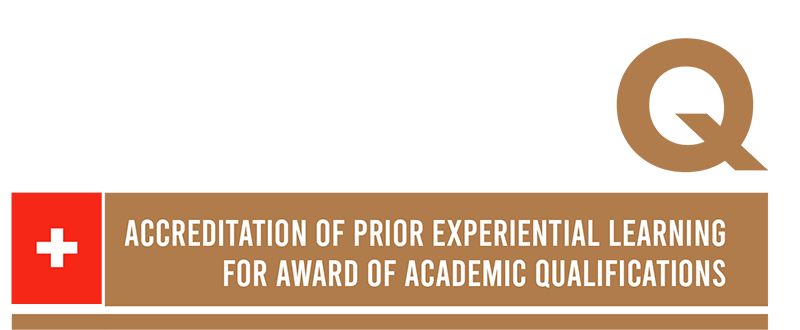Recognising the outcomes of non-formal education for early school leavers
Background
The Early School Leavers’ non-formal education (NFE) programme was started in 2004 by the Ministry of Education in close partnership with Questscope, an international non-governmental organisation. This pioneering programme serves early school leavers within the age category 13–18 (males) and 13–20 (females)[1]by enabling learners to acquire knowledge, skills and positive attitudes and values, and prepares them to join formal vocational training or formal secondary school.
The NFE programme also enrols Iraqi and Syrian refugees.
Procedures and processes
The NFE programme for early leavers is based on active learning and participatory methods.
Using the dialogue method to identify study subjects of interest. Before starting any course in an NFE programme, a Participatory Rapid Appraisal (PRA)[2] is conducted to better understand, why young people leave school and what their needs and interests are. One of the reasons often given for leaving school is the fear of examinations and, in many cases, the experience of failing exams.
Diversifying assessment methods. As young people, after leaving school, gain different skills and experiences from those children in formal schools, the NFE programme has introduced criteria other than just examinations to assess the progress of these early school leavers. These methods include:
- Observation. Facilitators observe the students’ behaviour, recognise what students know and demonstrate and provide frequent feedback. Participation and interaction with others in the courses make up 50 per cent of the final marks.
- Engagement in the courses and activities outside the classroom comprises 10 per cent of the total marks.
- Tests and exams form 40 per cent of the final marks.
Establishing equivalencies. Facilitators link the texts that the students of NFE programmes produce on the basis of their own learning experiences to the study subjects covered in the regular curricula (such as history, geography and civic education) taught in formal schools. This is conducted through a process of association rather than in a predetermined order.
After successful completion of the 24-month NFE programme, graduates receive a certificate that is equivalent to 10th grade formal school education. This certificate is “equivalent” but not “equal” to that received by students in the formal education system. Graduates of NFE programmes need to take a placement test if they wish to continue in the formal education system.
An alternative pathway for learners with NFE certificates are the vocational training programmes of the Vocational Training Corporation (VTC), which is a government vocational training institution. In these VTC programmes students with 10th grade certificates from both formal and non-formal programmes have access. There is no difference between students with an NFE background and those with a formal educational background.
Overcoming stigma. To overcome stigma, the National Development Employment Fund (DEF) has formally agreed with the Ministry of Education and Questscope to provide small-business loans to students who successfully complete the VTC entrepreneurship course and have aspirations to start a small business. This way many disadvantaged youths are able to integrate into the labour market and overcome their “at-risk stigma” (Questscope, 2010).
Opening pathway choices. The early school leavers’ NFE programme is linked by law to the Home Studies Programme (HSP) with options for completing secondary schooling. In this programme the self-learning approach is adopted. Early school leavers are allowed to appear for their exams in public schools at the end of each semester, and later continue their studies, and ultimately complete the National Secondary Examination (Tawjihi). Basically, learners in HSP are allowed to study at the grade most suited to their level of skills and knowledge, all the way up to reaching the Tawjihi.
Outcomes and ways forward
An evaluation study (Al Nasser, 2014) has shown that most NFE programme participants passed the final level (equivalent to the 10th grade certificate) and were allowed to enter either vocational training or formal secondary education leading to the Tawjihi certificate.
By establishing linkages with existing programmes and institutions such as the VTC, the HSP and the DEF, the NFE programme for early school leavers has been successful in supporting pathways between general and vocational education and training.
Most graduates of the NFE programmes opted for the certified vocational training instead of formal secondary education. Some have even taken up a job.
NFE has become an indispensable part of Jordan’s social, economic and human resource development. It recognises and builds upon early school leavers’ existing interests and learning needs.
References
Al Nasser, A. S. 2014. A second chance: facts and figures of a programme for school dropouts in Jordan. In: K. Denys (ed.), Adult Education and Social Change.Jordan – Palestine – Lebanon – Syria – Egypt. Bonn, DVV International.
Questscope. 2010. Youth Employability Challenges and Effectively Improve School-to-Work Transitions Drop Outs (Non-Formal Education) as Questscope’s Mainstreaming Model. Beirut, Working paper presented at the International Conference ‘Children and Youth in the Middle Eastern and North African (MENA) Region: Towards Unleashing their Potentials Education’. http://menacpi.org/CPI/uploads2009/Beirut/Jawad_AlGassous_paper.pdf(Accessed 2 January 2012).
Source: UNESCO UIL

